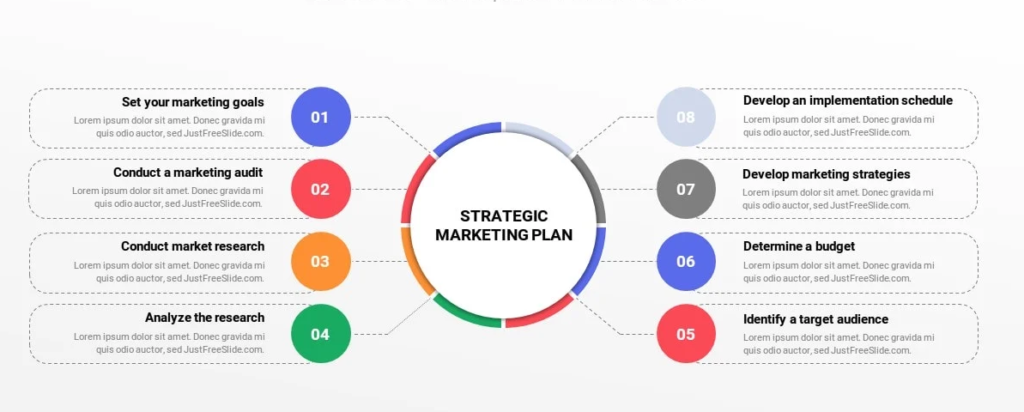In today’s world, many businesses invest heavily in marketing, but not all of them see significant returns. However, by implementing effective strategies Achieve a high ROI with sustainable growth and maximize the value of your marketing efforts. In this blog, we will explore actionable tips and techniques to help you on how to improve marketing ROI.
In this post, we’ll give you effective strategies for how to improve marketing ROI:
- Set ROI Goals
- Experiment with different marketing channels to know How to improve marketing ROI
- How to increase ROI with marketing analytics
- How to Target the right audience and increase ROI
- How to improve your content marketing ROI.

Advanced✨A.I. Enabled Performance Marketing & Business Mentorship Program
Please fill up the form below to book your free trial class today
Table of Contents
ToggleHow to Improve Marketing ROI?
In today’s world, many businesses invest heavily in marketing, but not all of them see significant returns.
However, this you can achieve by implementing effective strategies, Achieving a high ROI with sustainable growth, and maximizing the value of your marketing efforts.
In this blog, we will explore actionable tips and techniques to help you How to Improve marketing ROI.
In this post, we’ll give you five effective strategies for how to improve marketing ROI:
- Set ROI Goals
- Experiment with different marketing channels
- Understand your target audience
- Test and Optimize
- Nurture Customer Relationship
Step 1: Set ROI Goals
Before implementing a campaign. It’s important to set up clear and specific goals and define KPIs as key performance indicators and consider the factors that can impact your journey to achieving them. It’s increasing website traffic, generating leads, or boosting sales, Setting measurable objectives will provide focus and direction to your marketing efforts. Having specific goals and metrics in place will help you track your progress and make data-driven decisions.
When you set your ROI goal, make it a smart Goal one that is specific, measurable, achievable, relevant, and time-bound.
- Specific: Instead of something like ‘increase ROI,’ your goal should be something specific like ‘increase ROI by 25%.’
- Measurable: Make sure you can measure your progress toward your goal. Have the right data collection and reporting methods in place.
- Achievable: If your goals aren’t realistic, they won’t do you much good. Your goals can be ambitious, but make sure you can realistically achieve them.
- Relevant: Your ROI goals should be relevant to your overall business goals. For example, if your main objective is to increase sales, getting more Instagram likes isn’t a relevant goal unless it contributes to sales.
- Time-bound: Establish a timeframe within which you’ll aim to reach your goal. Making your goals time-bound provides motivation for completing them in a timely manner.

Read More: Discover 5 Best Lead Generation Techniques in Digital Marketing That Really Works in 2023
Step 2: Experiment with different marketing platforms
Experiment with different marketing campaign channels to determine the highest ROI. Experiment with various channels and platforms like:
- Email marketing: The use of email within your marketing efforts to promote a business’s products and services, as well as incentivize customer loyalty. Email marketing is a form of marketing that can make the customers on your email list aware of new products, discounts, and other services.
- Performance marketing: such as driving conversions or sales. This approach optimizes sales or leads by focusing on accurately targeting people who are most likely to buy.
- Social media marketing: Social media marketing is the process of creating content for social media platforms to promote your products and/or services, build community with your target audience, and drive traffic to your business. With new features and platforms emerging every day, social media marketing is constantly evolving.
- Customer loyalty programs: a customer loyalty program is a marketing approach that recognizes and rewards customers who purchase or engage with a brand on a recurring basis. These incentives and specific benefits often result in the customer becoming a more regular consumer or the ideal — brand promoter. Benefits may involve free merchandise, rewards, coupons, or insider perks like early access to new products.
- Video marketing: Using video to market your product, increase engagement, and reach an audience more amenable to video than to text.
- Video can foster an intimate bond between product and consumer in a way that text can’t, especially if businesses use people in their videos
- Paid Ads: Paid advertising is a digital marketing model where Businesses display ads to internet users. The business willing to pay the most has their ad displayed and they pay for each click on their ad.
- PPC: is called PPC (pay-per-click) advertising, though not all paid ads are PPC ads. Paid ads are displayed on many platforms, including in Google search results, social media platforms, and other websites.
A campaign’s performance will help you see the channels that best suit your target audience.

Step 3: Understand your target audience
Conduct some market research to discover what prospects want, what’s important to them, and what they’re willing to pay. and Clearly define who your target audience is based on demographic. here are some ways to research what your customers want:
- Look at competitor efforts
- Read online reviews
- Monitor and compare the social media of you and your competitors
- Ask customer-facing employees to communicate with customers about their needs.
Here are some additional ways to help you gain a deeper understanding of your target audience:
- Define Target Audience: Clearly define your target audience and his information such as; age, gender, location, income level, education, and occupation. Additionally, consider psychographic factors like interests, values, attitudes, lifestyle, and behavior patterns. The more specific you can be in defining your target audience.
- Market Research: Conduct thorough market research to gather insights about your target audience. This can involve surveys, focus groups, interviews, and online research. Collect data on their needs.
- Analyze Customer Data: Utilize customer data from different sources such as; website analytics, CRM systems, social media insights, and customer feedback. to Analyze this data and identify customer behavior.
- Competitor Analysis: Analyze your competitors’ marketing strategies to Understand how they position and the channels and platforms they use.
- Stay Update: stay Updated with the latest industry trends, technology, and consumer behavior
- Customer Feedback: Actively feedback your customers through surveys, reviews, and customer support channels. This feedback can provide valuable insights into your target audience’s
Read More: How Digital Marketing Can Help To Grow Small Businesses?
Step 4: Test and Optimize
Implement A/B testing to experiment with different marketing strategies, such as; landing page, copy, graphics, navigation links, calls to action, and website colors, to determine the changes that prompt visitors to take action. . Analyze the results and optimize your campaigns based on what works best for your target audience.
Try A/B testing on email campaigns with different subject lines, images, and offers.
Define a specific period over which a split test should run. After identifying a winning campaign, continue optimizing it so you end up with the highest sales or leads at the lowest cost.

Step 5: Nurture Customer Relationship
If your organization wants to achieve long-term success, you’ll need to focus on delivering what your customers need rather than just selling to them.
Dedicating time to nurturing a relationship with your customers can present major benefits for your business, including customer retention, loyalty, and satisfaction, as well as repeat business that will pay off, in the long run, helping you to improve your content marketing ROI.

Read More: 32 Common Digital Marketing Mistakes You Can’t Afford to Repeat!
Nurturing Long-Term customer Relationship process such as:
- Customer service. One great way to get started with relationship building on social media is to create a dedicated customer service channel. Demonstrating that your business is committed to customers and their interests lets customers know they’re going to be taken care of throughout their buying experiences.
- Customer reviews. Word of mouth has a big influence on the way customers perceive your brand. In fact, 92 percent of B2B buyers are more likely to purchase a product or service after reading a trusted review.
- Be Patient. Customers want the truth—and if your marketing isn’t being honest, it could hurt your brand’s perception.
- Customers Feedback. Customer’s feedback to trust organizations that believe their opinion matters. Show your customers that you care about their input by putting their suggestions and wants into practice. Listening to and implementing customer feedback is an essential step in gaining their trust and loyalty.

Advanced✨A.I. Enabled Performance Marketing & Business Mentorship Program
Please fill up the form below to book your free trial class today
Conclusion
How to Improve Marketing ROI or Improve your content marketing ROI is crucial for businesses seeking sustainable growth and success.
By setting clear ROI goals, experimenting with various marketing channels, understanding the target audience, testing and optimizing strategies, and nurturing customer relationships, businesses can achieve higher returns on their marketing investments.
These five effective strategies will enable companies to make data-driven decisions, tailor their marketing efforts, and ultimately drive better results by telling them how do digital marketing strategies improve ROI for a company.
Prioritizing customer needs and building long-term relationships will also lead to increased customer satisfaction and loyalty, contributing to overall business success.
FAQs for How to Improve Marketing ROI
Q: How can I measure my marketing ROI effectively?
A: To measure marketing ROI, calculate the revenue generated from marketing efforts and subtract the marketing costs. Divide the result by the marketing costs and multiply by 100 to get the ROI percentage. Use specific metrics like website traffic, leads generated, and sales attributed to marketing campaigns.
Q: Are there any free marketing channels that can improve ROI?
A: Yes, some free marketing channels include social media marketing, content marketing through blogs, and email marketing for reaching and engaging with potential customers without incurring additional costs.
Q: How long should I run A/B tests to get accurate results?
A: It’s recommended to run A/B tests for a specific period, typically at least two weeks, to gather sufficient data and ensure the results are statistically significant. Avoid making quick judgments based on limited data.
Q: How can I optimize my marketing campaigns based on A/B test results?
A: Analyze the A/B test results and identify the elements that performed best. Implement the successful elements in your marketing campaigns to improve their effectiveness and continue iterating to achieve even better results.
Q: What can I do to improve customer relationship and loyalty?
A: Focus on providing excellent customer service, actively seeking and valuing customer feedback, and responding promptly to customer inquiries or concerns. Utilize customer reviews and testimonials to build trust and credibility with potential customers.
Q: Should I invest more in customer retention or acquisition for better ROI?
A: Both customer retention and acquisition are essential for a successful marketing strategy. However, investing in customer retention can lead to higher ROI in the long run, as satisfied and loyal customers are more likely to make repeat purchases and refer others to your business.
Q: How can I better understand my target audience for improved ROI?
A: Conduct thorough market research, analyze customer data, and stay updated with industry trends and consumer behavior. Use social listening and engage with customers to gain valuable insights into their needs, preferences, and pain points.
Q: What are some key performance indicators (KPIs) I should monitor for marketing ROI?
A: Some essential KPIs for measuring marketing ROI include conversion rate, customer acquisition cost (CAC), customer lifetime value (CLV), return on ad spend (ROAS), and website traffic sources.
Q: Is it essential to have a dedicated customer service channel for relationship building?
A: Having a dedicated customer service channel, such as on social media or through a helpline, can enhance relationship building by demonstrating your commitment to customer satisfaction and prompt issue resolution.
Q: How can I encourage customers to provide feedback and reviews?
A: Incentivize customers to leave feedback and reviews by offering rewards, discounts, or exclusive offers. Make the process easy and straightforward, and express genuine gratitude for their input.







